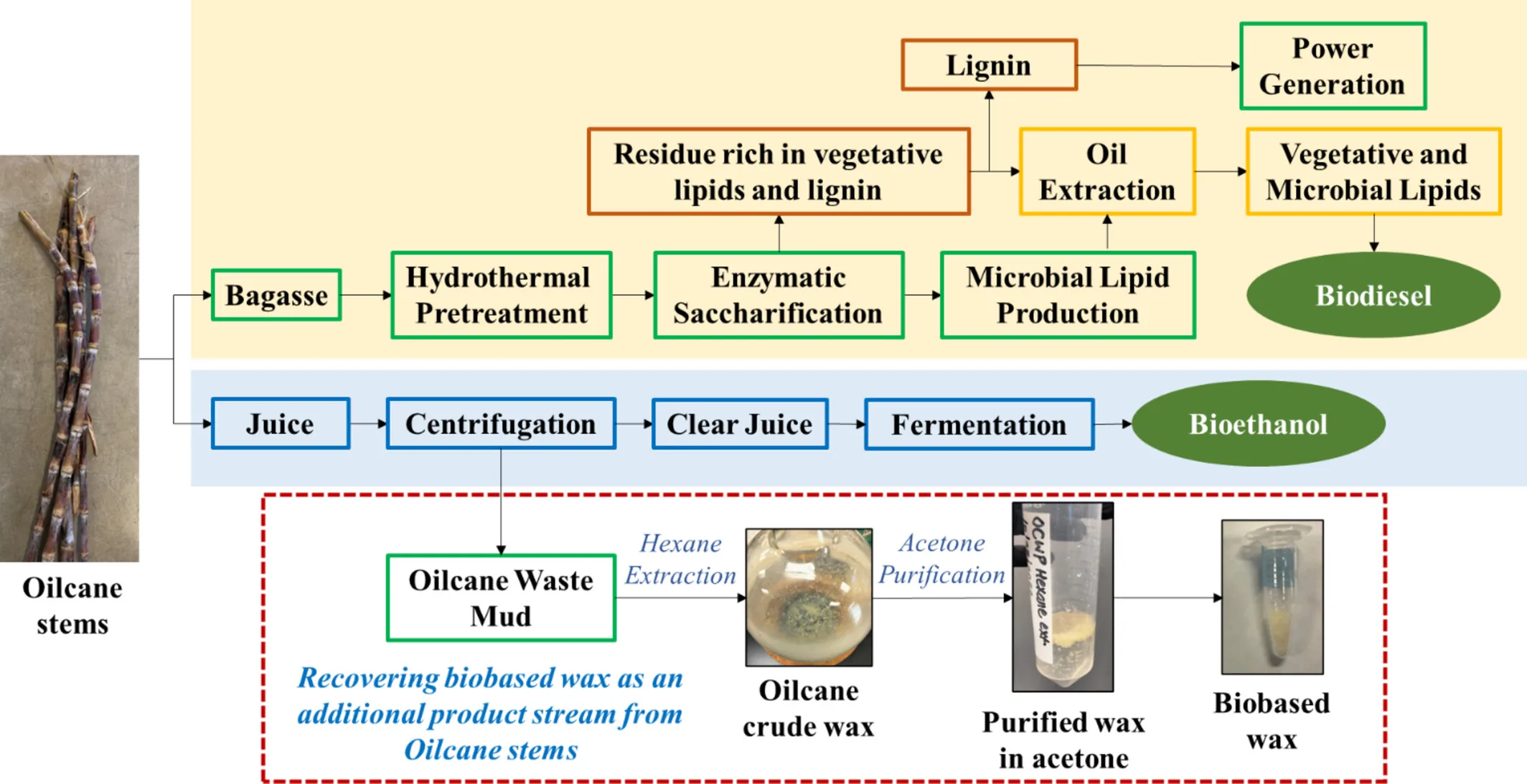Harnessing the Potential of Oilcane Waste Mud for Recovering Biobased Waxes
Themes: Conversion
Keywords: Biomass Analytics, Feedstock Bioprocessing, Hydrolysate
Citation
Banerjee, S., Eilts, K.K., Singh, V. April 17, 2024. “Harnessing the Potential of Oilcane Waste Mud for Recovering Biobased Waxes.” Journal of the American Oil Chemists’ Society. DOI: 10.1002/aocs.12844.
Overview

Oilcane is an engineered sugarcane with the ability to hyper-accumulate vegetative lipids. It is processed to obtain juice and bagasse as a potential substrate for the production of biofuels and biochemicals. The juice comprises solid particles that are separated as waste mud before the fermentation of the juice. In this study, the oilcane waste mud (OWM) generated from 1000 liters of oilcane juice was quantified and evaluated as a potential resource for recovering biobased waxes. Hexane and ethyl acetate were evaluated as two different solvents for extracting waxes from OWM followed by its purification using acetone. The extracted biobased wax samples were characterized for their chemical and thermal profiles which were then compared with commercial natural waxes. Detailed mass balance shows that 53.6 ± 2.6 kg (dry basis) of solid OWM gets generated upon processing 1000 L (~1068 kg) of oilcane juice. Hexane and ethyl acetate led to a crude wax yield of 25.6 ± 0.2% and 16.6 ± 0.4% (wt/wt, dry basis) respectively from OWM at the end of 8 h. The relative purification of the wax samples was reported in the range of 58%–65% (wt/wt). The purified OWM wax has a melting point of 74.7°C. The waste mud was valorized as a source of biobased waxes with characteristic chemical and thermal profiles comparable to commercial natural waxes (carnauba and beeswax). Considering the decline in the supply of petroleum wax in the future coupled with the switch to “greener” alternative products by consumers, OWM could be a valuable source of natural wax in the industrial sector reducing the dependence on petroleum waxes. Eventually, recovering biobased wax as a co-product from OWM would bring in an additional stream of revenue leading to the development of a zero-waste biorefinery based on bioenergy crops.
Data
Download (588 KB) includes:
- Crude and purified wax yields
- DTG curves for multiple waxes
- Acid values and melting properties